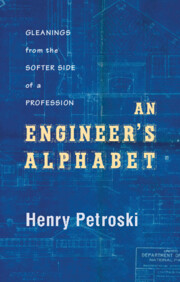M
Published online by Cambridge University Press: 25 October 2011
Summary
Marchant calculator. Before the advent of the digital computer, this electrically powered calculating machine, whose keyboard was suggestive of a large cash register, but with much smaller and more numerous keys, was among the most sophisticated pieces of equipment available for extensive engineering calculations. A working Marchant, with its register that moved back and forth like a typewriter carriage, had a characteristic mechanical sound that was rotary and repetitive. In an article titled “Socioengineering” (The Bridge, Fall 1994, p. 5), the aerospace engineer Norman Augustine (born in 1935) remembered the 1950s, when Marchants were “the revolutionary new electromechanical desktop computers of the day.” He went on to recall:
In my first job, working in a huge room seated in formation with several acres of other young engineers, each Friday afternoon we would ceremoniously greet the beginning of another weekend by all simultaneously dividing by zero and marching smugly out the door. Our hopes for a breakthrough in perpetual motion were dashed each Monday morning when we would discover that our boss had unplugged all the machines, as he good-naturedly did each Friday evening to begin the celebration of his weekend!
For a description of the calculating power of similar machines, such as the “hand-operated, electrically driven Friden mechanical calculators” in the 1940s, see Walter G. Vincenti, “Engineering Theory in the Making: Aerodynamic Calculation ‘Breaks the Sound Barrier’,” Technology and Culture, October 1997, p. 834, where he relates how for some problems in transonic flow, “the numerical work for the four solutions took the better part of a year,” whereas “the same could be done today in seconds on an electronic desk-top computer.”
- Type
- Chapter
- Information
- An Engineer's AlphabetGleanings from the Softer Side of a Profession, pp. 191 - 208Publisher: Cambridge University PressPrint publication year: 2011



